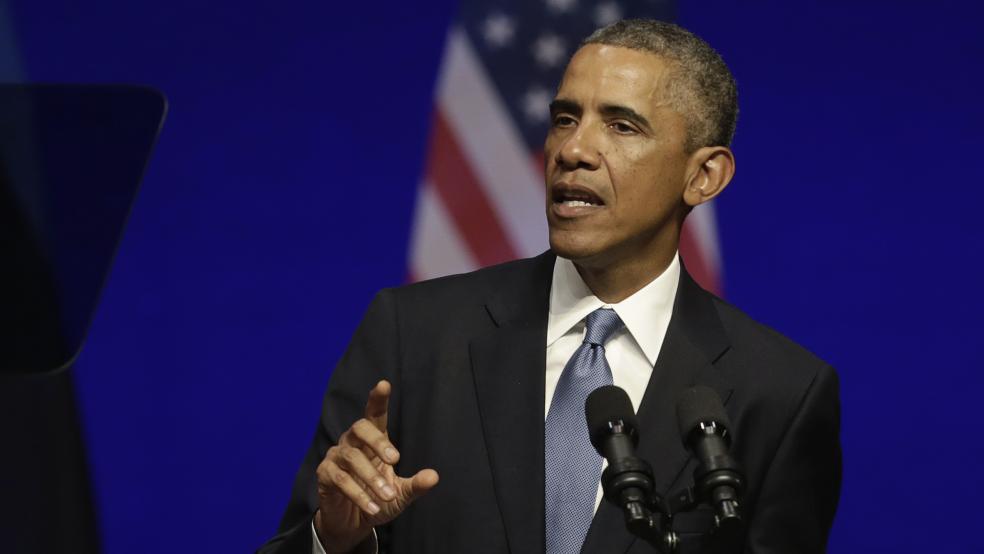In my first few years of blogging, I joined a number of other writers in a loosely organized effort called Porkbusters. We wrote stories about the abuse of earmarks, the self-aggrandizement of Capitol Hill lifers such as Robert Byrd, Ted Stevens, Charlie Rangel, and the connection between pork barrel politics and the passage of ever-increasing federal budgets. Media outlets picked up on the issue, and eventually the earmark process became toxic.
Congress eventually produced internal reforms that made it much more difficult to apply earmarks, especially in secret. In 2006 Senators Tom Coburn and Barack Obama partnered on a bill that created a federal database from the federal budget -- one which allowed voters to find earmarks and federal contracts by zip code, author, recipients, and cost. Some of those who worked on the Porkbuster initiative even received ceremonial copies of the legislation after it passed. My copy is still unframed, although I have it in my office.
Related: Red States Have Borne the Steepest Budget Cuts
To be sure, this activist effort had its critics, most of whom either served in Congress or had some business connection to Capitol Hill. One criticism warned that banning earmarks would derail the budgeting process in Congress by removing incentives for compromise. One could argue that the lack of easy access to earmarks has contributed to the breakdown of the budgeting process; only two of the budgets since the Coburn/Obama bill passed have been accomplished through regular order.
We have endured a long stretch of artificial “cliffs,” continuing resolutions, and omnibus bills since that time as both parties dug trenches over tax and spending priorities. Given the other inducements to polarization during the same period, especially the class warfare adopted by the Left since the Great Recession, that seems more likely to be correlation rather than causation.
Another criticism turned out to be closer to the mark. Legislators warned repeatedly about disarming themselves in terms of directing federal funding, especially Republicans after Barack Obama won the Presidency. Taking away earmarks, they argued, forced them to give Obama administration a limited blank check – block funding for federal agencies with little or no control over how the funds actually got spent, and where. Anti-earmark activists wanted to end abuse of power in the legislative branch, but would the curtailing of earmarks open the door for abuses of power in the executive branch?
Related: Defense Earmarks Squander $1.6 Billion a Year
The answer appears to be yes, according to an analysis of federal spending by Reuters. In its review of the first five years of spending in the Obama administration (fiscal years 2009-13 inclusive), discretionary spending fell across the board, likely due to expansion of entitlement programs in the Great Recession and its historically weak recovery. It didn’t fall evenly, though. While solidly red states like Mississippi and Texas saw average cuts of 40 percent in federal grants, reliably blue states – and even more importantly, swing states – did much better in disbursements from the federal government.
Reuters sorted the states into three categories: “red” states, where Obama got less than 45 percent of the vote in 2012, “blue” states in which Obama got more than 55 percent of the vote, and “purple” states where Obama won between 45-55 percent of the vote. As noted, red states sustained a 40 percent cut in discretionary grant spending, but blue states only lost 22.5 percent, just a little over half as much.
Purple states came closer to the latter figure, with an average loss of 27 percent in federal grant spending. Even after recalculating for population, demographics, and even federal highway miles, red states came in 15 percent worse than the average swing state in federal grant money. (Important note: This does not include the massive emergency spending on Hurricane Sandy, which went almost exclusively to blue states.)
Related: Government Wastes More Money than You Think
Interestingly, this disparity does not appear in entitlement spending. Nor did it show up in the administration’s spending from the 2009 stimulus package, where one might expect to see it, but which came with significant earmarks and directed funding. Only in project grants, controlled by political appointees in the executive branch and of late uncontrolled by Congress, does this spending tilt toward friendly states occur. It seems like a 21st-century version of the spoils system.
John Hudak, who conducted this study for Reuters and who wrote a book on the subject called Presidential Pork, concluded that politicization of federal grants is the likely culprit. That has been the case prior to the self-imposed earmark ban too, Hudak says, but Congress had the ability to push back against the executive by using their prerogative to earmark funds. After House Republicans imposed an earmark ban in 2011, Hudak tells Reuters, that clout disappeared.
This poses an intriguing, and depressing, conundrum for clean-government advocates. The proper and constitutional power for allocating funds rests with the legislature, but decades of pork-barrel spending and sleazy relationships destroyed the trust necessary for that to take place. That, however, leaves the decisions on directed spending in the hands of unelected bureaucrats, which allows for even fewer checks on power and more opacity as a result. Having to choose between them sounds like choosing between being robbed with a knife or a gun. The result’s the same, even if one feels momentarily glad of having some impact on the process.
The real solution to both is to limit the power of the federal government and to force the jurisdiction and the funding for many of these initiatives to the state and local level. That would make oversight and transparency easier to impose, and waste a lot less of the taxpayer’s money. In the meantime, Speaker John Boehner is standing by the earmark ban, which is likely the lesser of two evils. With that said, though, I won’t rush to put that ceremonial copy of S2590 in its frame.
Top Reads from The Fiscal Times:






